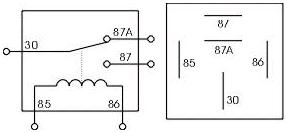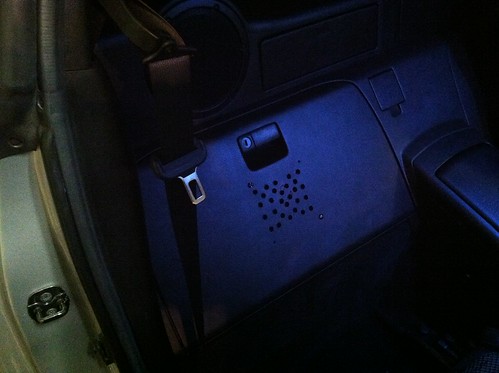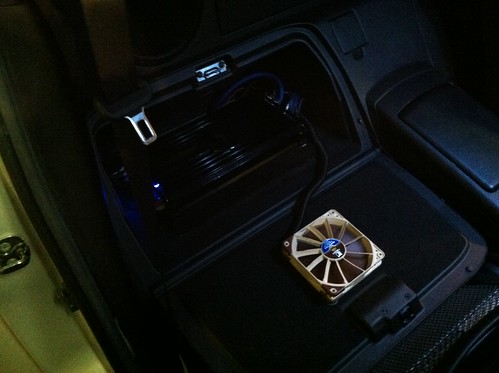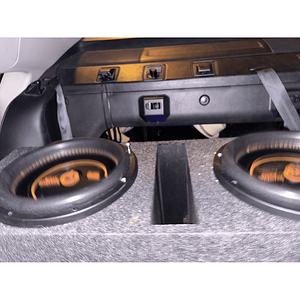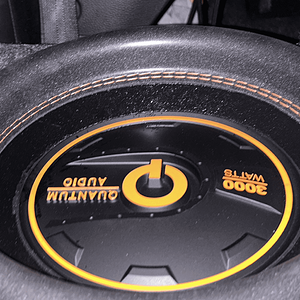@bbeljefe ; Ok, I just watched that video. Now some easy questions for you.
 If you don't want to read all of this.. you could just jump down to my "Edit" below highlighted in bold.. and skim this top part if you need.
If you don't want to read all of this.. you could just jump down to my "Edit" below highlighted in bold.. and skim this top part if you need.
Wow, that dude has some setup lol.
Anyway,.. The relays I bought are the 4 terminal relays.. I don't have them in front of me,.. but would be terminals 30, 85, 86, and 87.
So essentially
85 is always common (ground)..
30 is going to be what I'll call my "hot" 12v constant power (I'm sure there's a better term).. ..
86 I don't know to be honest, maybe you can explain it a little better.. and
87 is what he called "Always open".. Which basically to me just means it's what passes the current onward from the terminal
30 ( in this case the 12v power source (from my power wire).
Ground is easy enough.. so
85 no issues with.
Terminal
87 seems easy to understand,.. but he was showing differences in a 5 prong and 4 prong. The 5 had two
87 terminals,.. and my question is based on it's function which seemed to just send power through both terminals when you switched on the switch.. Is that *any* different than say splicing two accessories that need power together and connecting them to a single 4 post, at terminal
87? I didn't see any additional purpose for dual
87 posts,.. aside from I suppose if you are trying to limit the amperage.. each terminal
87 would be half amperage of the rated relay.
My relays are 4 prong as I said.. with
30,
85,
86 and
87.. that's what I needed right? I seem to remember you saying something about getting a 5 pin.. but maybe that was to do with the headunit?
At any rate, could you better explain the function of the
86 terminal?
I know I send the Remote wire to terminal
86,.. then I will splice two wires from terminal 87,.. one to the remote to give the amp's remote a signal,.. and then one to the fan positive? I'm also, per your instructions, wiring my fused 3amp wire to the fan's positive (or have I gotten this mixed up now?) -- I have this drawn out on my own diagrams, so I could have made a mistake with two wires going to the fans positive.
Still I'd like terminal's
30 and
86 explained better in their function. In the diagram it has a coil running from
85 to
86.. So logically I'm not seeing how a coil from the remote wire to ground is going to push power to the amp's remote from
87 -- Unless the switch in the relay connects , well.. essentially all terminals.
I'll do some more digging around the net for explanations in the mean time.. I'm sure it's explained all over,.. I'm really not trying to waste your time here.

I just like to know how things work even if I already know how to make them work with wiring.
Edit: Watched another video that had the relay open -- Makes it make much more sense:
So have an additional question.
I believe you told me to connect Remote from HU to 86,.. 85 to ground,.. 30 goes to power from amp... and I fuse this connection to the fan positive... and 87 you said to go to the input of remote on amp.. AND to positive on fan.
Two questions.
1) It makes more sense to me to have 87 going to positive on fan .. and that's the sole lead going to the fans positive. Why do I say this? Well,.. If I'm connecting 30 to the fan positive AND 87 to fan positive.. it sort of makes the relay redundant doesn't it? Which leads to question two.
2) Why am I using a relay to begin with? It seems to me it's merely a switch to the fan going on and off.. What's holding the power down is going to be the 3amp fuse in line going to positive on the fan. The amp already works via the remote wire and clicks when that wire gets power (which sounds like that's a relay in the amp by the way this all works).. So it's almost like wiring up this relay serves no purpose because the amp is already switching on and off when I want it to.. Ahh.. as I'm typing I think I get it -- Going from the power off the amp is going to keep the fan on the whole time,.. and the relay is going to keep it on when the remote has power, and off when remote doesn't have power. -- So this just leaves me with original question one.. If I'm connecting both 87 to Fan terminal AND power from 30 fused to fan terminal,.. is this the right wiring layout, because in that way it doesn't make the relay make any sense to me --
I see the relay as an "on/off" switch.. and to me it would seem like the fan + terminal should just get a connection from one terminal of the relay, not two. Perhaps you can explain why two (or tell me I'm just mixed up and it is just one terminal going to the fan (+) positive terminal?
I remember the main reason I'm using the relay in the first place is because the remote wire is something like 250mA,.. which is too low to reliably and safely power anything,..
I appreciate the time and help.

